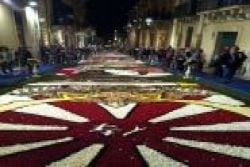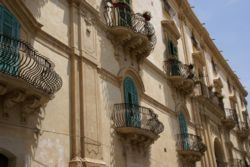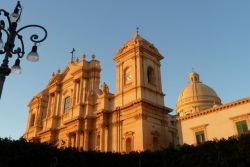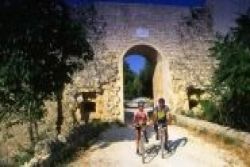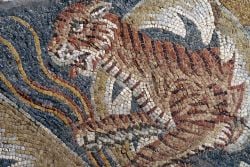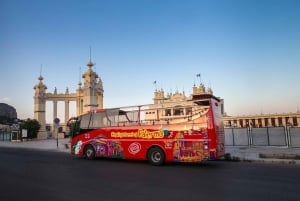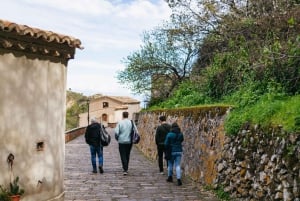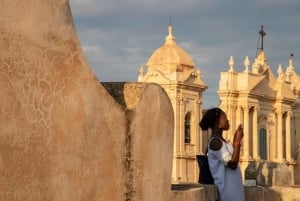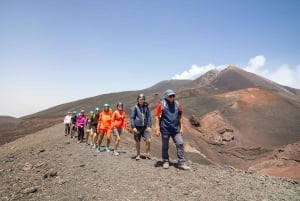Noto
Noto, the “Garden of Stone”, owes its architectural uniformity to the earthquake of 1693 that destroyed the old town centre. The ancient Noto – Noto Antica – lies eight kilometres north on Mount Alveria.
Noto is also called the capital of Sicilian Baroque. Palazzos, town mansions, churches and cloisters flank the main road. Noto is listed as UNESCO World Heritage Site. As building material the architects used tuff stone, under sunlight the city seems to be dipped in honey. The soft Iblean stone has been damaged by traffic vibrations, some buildings are always undergoing renovations and therefore inaccessible to tourists. Parts of the cathedral collapsed on a Sunday in the ywar 1996, fortunately after the mass, so nobody of the believers was hurt, because all of them had already left the church. The major restoration works on the church were completed in 2007. The reconstruction is remarkable as the same techniques and materials of the original builders in the 18th century were used. Usually the many churches of Noto are only open at mass times.
(Video by courtesy of Todaro Net)
Noto offers the great picture – a harmonious combination of Baroque religious buildings and palazzos. Best times to visit are early in the morning just after sunrise and in late afternoon right before sunset, when the sun dips this gorgeous stony masterpiece in gold.
From April to mid June and in September/October you won’t be the only visitor in Noto – in fact you should prepare yourself for hordes of tourists, because every Sicily round trip includes a visit to the town. People populate mostly the main street, while the rest of Noto is hardly undiscovered by the crowds. There are still plenty of quiet streets to wander and squares to explore.
Things to do and see in Noto
The main road Corso Vittoro Emanuele runs straight from “Porta Reale” to Noto’s main square “Piazza Municipio” – an “Orgy in Baroque”. This superb square features the Cathedral and the town hall, Palazzo Ducezio, which houses an impressive hall of mirrors – the “Sala degli Specchi” with 19thcentury frescoes. It is well worth a visit and the entrance is free. Usually there are not many visitors because most people beeline straight for the Dome.
Also very interesting buildings are Palazzo Astuto and Palazzo Villadorata. The little town is proud of its 35 churches – the most visited one is the Cattedrale di San Nicolò di Mira, which was finished in the year 1776. If you have got some time left, we recommend a visit to the Monastero di Santa Chiara. It boasts an oval plant and the interior is divided by twelve columns. The monastery houses a 16th century “Madonna with Child”.
One of the best places to head for a fine view over Noto's honey coloured monuments is the bell tower of the church Chiesa di San Carlo. Go early morning or late afternoon for the best light for photographs. If you are keen on pics another great place to get some snaps are the fancy balconies of Palazzo Nicolaci and the Teatro Comunale building.
One of the utter joys of Noto is simply wandering around and admiring the architectural harmony, the amazing facades and elegant balconies. It is a stone garden, but a living, breathing and inspiring one.
Local Tip: we recommend a wine tasting ( or two or three....). In the area around Noto you will find wine producers, not big or great in terms of quantity but in terms of quality.
Restaurants & Bars in Noto
There are several restaurants in Noto, all of them good. For fresh seafood, the best cheeses of the region, and local cuisine we recommend “Ristorante I Sapori del Val di Noto” – their pasta and bread made of antique autochthon wheat species is a real taste experience. Regional cuisine of the Iblean mountains with the special something is served at Ristorante Meliora, which is hidden in the maze of alleys and streets near the church “Chiesa del SS Crocifisso”.
Please find more restaurants and bars at Restaurants
Accommodation in Noto
You won’t find the typical tourist resorts in Noto (what definitely adds to the charm....). To get the full “Noto-Feeling”: there are a variety of Bed and Breakfast options in the historical centre, and a Youth Hostel next to Palazzo Impelizzeri. Notos surroundings offer some very nice Agriturismos.
Please check our Accommodation page
Events in Noto
“Infiorata di Noto” and “Corteo Barocco” – third weekend in May - the street Via Nicolaci is decorated with flower carpets (similar to the “Alfombras” of Orotava in Tenerife). From Saturday night to Sunday night Noto celebrates with music, dance and theatre. 200 inhabitants dressed in Baroque garments bring back the life of Noto some 300 years ago.
On summer weekends often parties and fairs in the town park, a public garden east of the centre – best place for the evening “passeggiata”
More events in Sicily you will find here
Noto Antica
The road to the old Noto offers some dramatic views of the rocky surroundings what makes the trip quite spectacular. Pack comfy shoes and a picnic, there is plenty to discover also in the old town, such as the ruins of a Capuchin Convent, several necropolises, a Medieval castle and a Hellenistic gymnasium. Explorations have brought to light one Greek and four cemeteries of the third Sicel period. There are also some Byzantine tombs and Christian catacombs. Great MTB biking itinerary: a narrow asphalt road leads through canyons, orchards and olive groves back to Noto. By the way: before Heracles dipped in the hot-water river in Segesta, he had a stopover in Noto Antica after his seventh task, as well as Daedalos after his flight over the Ionian Sea.
Villa Romana del Tellaro
The Roman Villa del Tellaro is located south of Noto near the river Tellaro. Beautiful mosaics adorn the floors (the most spectacular one is the “Hector mosaic”). The “Villa Romana del Tellaro” is the little sister of the famous Villa Romana del Casale in Piazza Armerina, but far less known and therefor far less visited.
Please see more at Sights & Attractions
Lido di Noto
Lido di Noto is the typical Sicilian seaside resort where mostly locals and Italians spend their holidays. The sandy beach is quite nice, the water is clean, and there are plenty of restaurants, bars and shops, usually only open during the summer months. Between the numerous lidos you will also find many free beaches. In August Lido di Noto is so crowded that you can hardly imagine that out of high season the village sometimes seems like a ghost town.
How to get to Noto
By airplane
Catania Airport is 93 km away (1 h 20 min drive), Comiso Airport 70 km (1 h 15 min drive)
By car
From Trapani, Palermo, and Enna take the A19 to Syracuse, then follow SS 115. From Messina/Taormina/Catania A18 to Syracuse, then SS 115. From Agrigento or SS 640 to Enna, then A19 to Syracuse, then follow SS 115, or SS 115 and SS 124 (30 min more to drive)
By bus
Noto is connected to Catania, Syracuse, Avola, Modica, Ragusa, and Portopalo di Capo Passero by Interbus and AST services - from Syracuse it is only a 40 minute drive. CARUSO city buses connect Noto to Lido di Noto (beach). Timetables are available at Café Efirmedio at the bus stop south of the public town park
By train
Frequent train connections to Avola, Modica and Syracuse, to Ragusa three times a day. From June to October the old steam engine train “Treno del Barocco” connects Syracuse to Ragusa – with stops in all important Baroque towns like Noto, Scicli and Modica. A great possibility for the whole family to enjoy the particular landscape, and do some sightseeing – you don’t have to drive, and when you are travelling with children the train ride will make their day.


